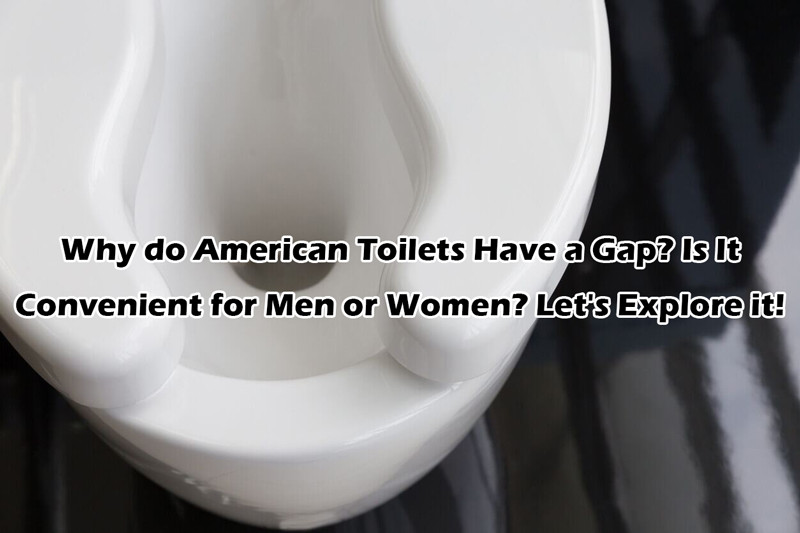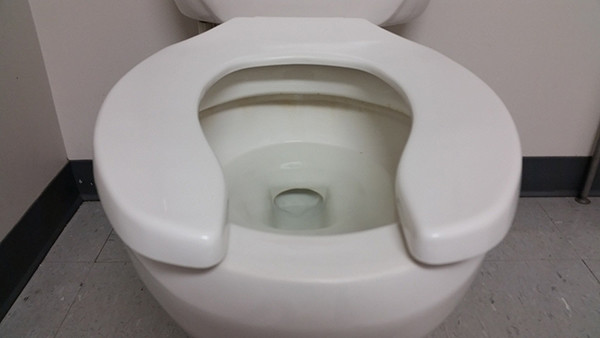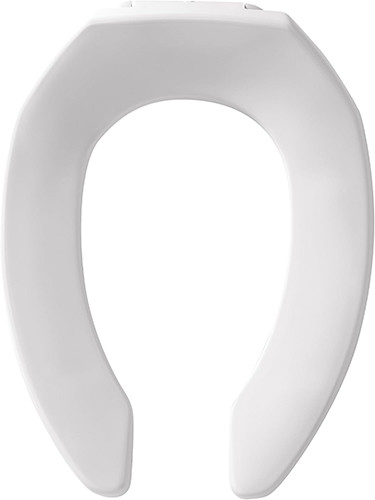
Toilets are a common feature in every household, but the design of toilets varies between countries.
For instance, toilets in the U.S. typically have a gap at the front, a feature that is never seen in Chinese designs. Why do American toilets have a gap? What does this difference reflect? Does it suggest that Americans need a special kind of toilet? Is this a nightmare for foreigners or a collective pursuit?
Public restrooms in the U.S. commonly feature a toilet design that many Americans prefer. However, the U.S. Department of Health has regulated that public toilets cannot use this particular design, even though people still choose to use it.
This toilet design is unique, and its existence serves a specific purpose.
Toilet Design in American Public Restrooms
Public restrooms in the U.S. often have both squat toilets and sitting toilets. Squat toilets and sitting toilets are connected through a common sewage pipeline.
Most Americans prefer sitting toilets, with squat toilets being less popular, typically chosen only by people suffering from conditions like asthma or kidney disease.
Many Americans have a strong aversion to squat toilets, considering them unhygienic. The U.S. Department of Health has specifically prohibited the installation of toilets that could cause urine to splash, such as squat toilets.
Thus, most public restrooms feature sitting toilets, but one of the most common designs is a sitting toilet with a gap at the front.
The gap in the front of the toilet confuses many people, who wonder what purpose it serves.
The Purpose of the Gap in the Toilet Seat
You may have seen this toilet design in American TV shows. How does it differ from other designs?
This gap is U-shaped, rather than the traditional O-shape, leading many to suspect it was designed with the obesity issue in mind. Some believe it was created to accommodate larger individuals.
Why the U-Shaped Gap Design Is Needed for Obese People
Obesity is a significant issue in the U.S., and the U-shaped toilet seat design was conceived to help address this problem.
For many women, obesity is a source of frustration, while men might see it as a more normal issue. However, obesity causes practical problems in daily life, affecting everything from social interactions to work opportunities. Obesity can make it difficult for people to find jobs, contributing to economic hardship. As a result, many Americans try to improve their physique, though this is not an overnight process.
Obesity also leads to physical discomfort, which impacts how people dress and socialize. It can create obstacles in life and even prevent some people from achieving their dreams due to poverty.
Thus, the U-shaped gap in toilet seats wasn’t designed selfishly for a specific group but with consideration for the challenges faced by obese individuals. It helps prevent the awkward situation of getting stuck when using the toilet.
The Meaning and Purpose of the U-Shaped Toilet Seat
In addition to helping obese people, the U-shaped gap also addresses hygiene concerns.
It’s well-known that urine can easily splash when using a toilet, leading to a range of unpleasant problems. Urine, as a bodily fluid, carries odor, and it needs to be properly managed to prevent further contamination. However, few people seriously address this issue.
Even those who try to clean up after themselves, such as by washing their hands in the sink or using soap or laundry detergent, may unintentionally cause secondary contamination.
No one can avoid splashing completely when using a toilet, and when urine splashes onto the floor, it can lead to bacteria spreading, which may result in infections or viruses. These pathogens can spread quickly, making it important to prevent them from thriving.
The U-shaped gap helps prevent urine from splashing outside the toilet bowl because it is wider than the traditional O-shaped seat. This design reduces the chances of urine splashing and thus helps maintain a clean and hygienic environment. Public restrooms in the U.S. are required by health regulations to use U-shaped toilet seats to prevent contamination of public spaces.
Comparison to China’s Toilet Designs
In China, most commercial buildings and economic districts are constructed with high-end hotels, and the toilets in these establishments are often of the highest standard. Some Chinese public restrooms may still have traditional O-shaped toilets, but many high-end hotels use U-shaped designs.
However, it’s unclear why more public facilities in China don’t switch to U-shaped toilets to replace the traditional ones, especially since they are more hygienic.
Cultural Differences Between China and the U.S.
Due to historical factors, China took a more protective approach to development, which led to a somewhat closed-off stance in the past. Even after gaining independence, China remained unstable due to foreign interference. Today, China is cautious about opening up too quickly but recognizes the need for gradual, step-by-step development and exchanges with other countries.
Though China has made significant progress, its social culture still lags behind that of the U.S. Despite understanding the importance of technological advancement, the general pace of development is still catching up. In particular, the use of squat toilets is ingrained in Chinese culture, which contributes to slower acceptance of sitting toilets.
Another factor is that many people in China are sensitive to hygiene and cleanliness, often fixating on small issues that might seem trivial to others. This psychological tendency makes it harder for them to embrace certain changes or new designs.
Cultural Exchange and Global Progress

As time passes, China has moved closer to the forefront of global development, though the country remains cautious about full-scale openness. Still, there are many shared values between China and the U.S., such as an emphasis on hygiene, though Americans may be more stringent in this regard.
Cultural exchange is an essential part of global progress. As China continues to develop, it can also learn from other countries’ experiences and improve its own standards, including in the design of bathroom products like toilets.
As the country progresses, it’s possible to design toilets that better suit the elderly or people with physical challenges, making them more comfortable and convenient. By exploring interchangeable toilet seats, the inconvenience and waste of traditional designs can be reduced while also maintaining cleanliness.
Conclusion
As technology advances, more and more household items, including bathroom fixtures, will become smart and automated. In the future, bathrooms in China may not only store hygiene products and medicines but also maintain a clean and well-ventilated space. These systems could even monitor the health of the user, providing automatic cleaning and disinfection while sending health reports based on usage.
 WOWOW Faucets
WOWOW Faucets





